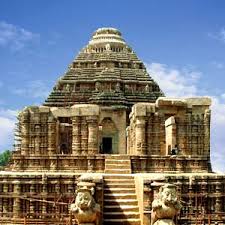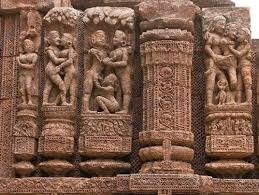Angika, March 20, 2010
Just as I caught my breath and stopped the audible panting, the lights dimmed out on a full auditorium with many people standing at the back. There was a brief introduction of “Angika” (with all the funny anglicized pronunciations of the Sanskrit words). Here’s the gist.
In Angika, the dance performed is the over 2000-year old Odissi, from East India. This dance, known for its square stance and fast feet and leg movements along with its stunning grace and sensuality was a dance that was mainly used as a means of expressing devotion. It was a means to advance in spirituality and so the themes and songs that you come across in this dance are also of this kind- devotional prayers or songs expressing love for the Divine. Sreyashi Dey, Artistic Director of Srishti Dances of India, was performing this lovely ancient dance with her students.
As the kids in the audience fretted a bit, complaining about the darkness, a clear resounding voice beckoned us, “Welcome to the temple of dance.” The voice belonged to Martin Walsh, whom I last saw as a ‘Galileo’ in the Residential College’s production of Brecht’s “Life of Galileo” in March 2009 (Mr.Walsh was brilliant as Galileo!) . Martin Walsh is head of the Drama Concentration at the Residential College and he has a perfect voice for narrating.
The words belonged to poet Zilka Joseph and she took us to a temple where we were to hear the stories of dancers as they prepared for prayer. We could smell the incense and the fragrant fresh flower garlands that they had lovingly woven. While we waited thus, the magic began.
The sound of strong tapping of feet with jingling of the bells on their anklets came first. It was followed by the dancers, looking resplendent in colorful elaborately designed Odissi costumes. In an invocation to the divine, the dancers seeked the blessings so gracefully with slow movements and a lot of poses. The effect was bewitching.
In most Indian traditional dances, the program always begins with an invocation. It could be to to Mother Earth ( it’s almost like asking her permission to dance as we do stamp the feet on ‘her’ when we dance ). Many dances also include a note of thanks to the Guru (the teacher) and the Divine.
The second dance, called the “Konark Kanti” was about the Temple of the Sun in Konark, Orissa.

In Joseph’s Poetry, she imagines that the moonlight touches the figurines on the Temple of Konark and brings them to life (like our “Night at the Museum”). These dancers start dancing and the musicians bring out their instruments and even the stars get dizzy looking at this impromptu performance. The raga (melodic mode) to which this song was set was a very pleasant one.

This dance was a wonderful one- so many moods shown clearly in expressions as well as clever variations in the choreography, as if the dancers wanted to show all the weapons in their arsenal.
The third dance, called “Manini”, the most expressive and I am sure, the most difficult one to comprehend, especially for a Western audience, was a solo by Shreyashi Dey. This song is about Lord Krishna’s beloved, Radha. She is waiting for her Lord and so she decorates herself as well as the gazebo and waits for the Lord. She is clearly happy anticipating his arrival. But as the time wears out (she in fact falls into sleep for a bit), her joy turns into despair and then anger and she flings all her jewelry and tears down the decorations. In the end, she is so dejected. you could say, “So it’s the case of a girl who has been stood up by her lover!”. You may be correct but here, “Radha” is the seeker who is searching for “the Ultimate Truth”, her lover and the story of Radha and her love are symbolic metaphors. Anyway, this piece requires perfect portrayal of the emotions that Radha goes through.

Odissi, is a dance that not only demands strength in movement, but it also requires the dancers to have good acting skills , as facial expressions are a very important part of this dance. Sreyashi Dey was absolutely brilliant in this song. The way she portrayed disappointment with trembling fingers, a heaving chest and eyes heavy with fatigue caused by unbearable sadness was brilliant. She ran through the gamut of emotions that Radha feels and at the end, when she lay on the floor in a bundle, totally dejected, you couldn’t help but reach out for her. This was a great piece.
The other two pieces were really fast and full of quick movements of both hands and feet. They demanded so much from the dancers (Kritika Rajan, Ishika Rajan and Debnita Talapatra were the other dancers from Shrishti Dances of India- they were very graceful and co-ordinated) and the stamina of these dancers as they moved through really tough pieces was something amazing. The choreography required co-ordination and you could find all the “yoga” postures from advanced yoga classes too.

The final Pallavi was really intense as the tempo was so fast-paced and the use of space in this piece was very nicely done. The dancers were very cohesive and the symmetry of their movements was so beautiful.
So there was the really beautiful dance. There was some wonderful poetry that set the stage for these dances. Where were the sculptures? Though we saw some brilliant postures as part of the dance, somehow the message of the connection of the dance form as an inspiration to sculpture or vice versa didn’t get conveyed. Maybe this aspect could be elaborated in the next performances (which would be great!).
This was definitely a great show and the next time you get a chance to watch Odissi, please grab it.
Krithika, for [art]seen

